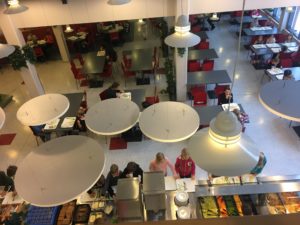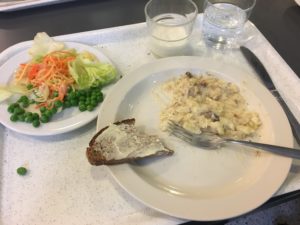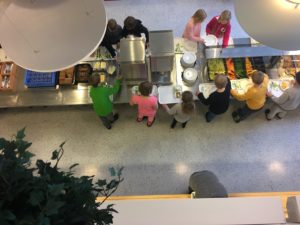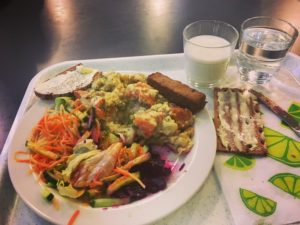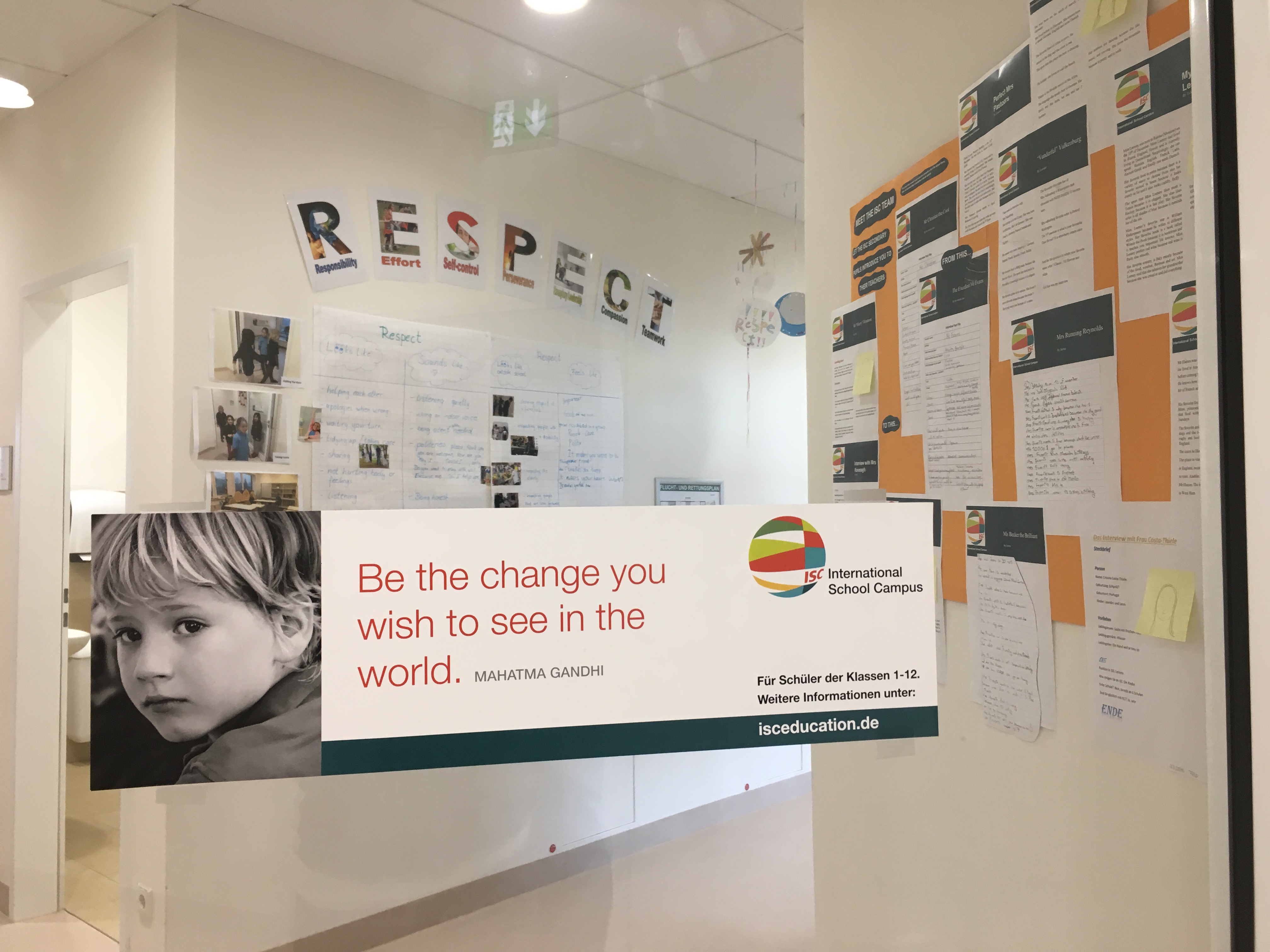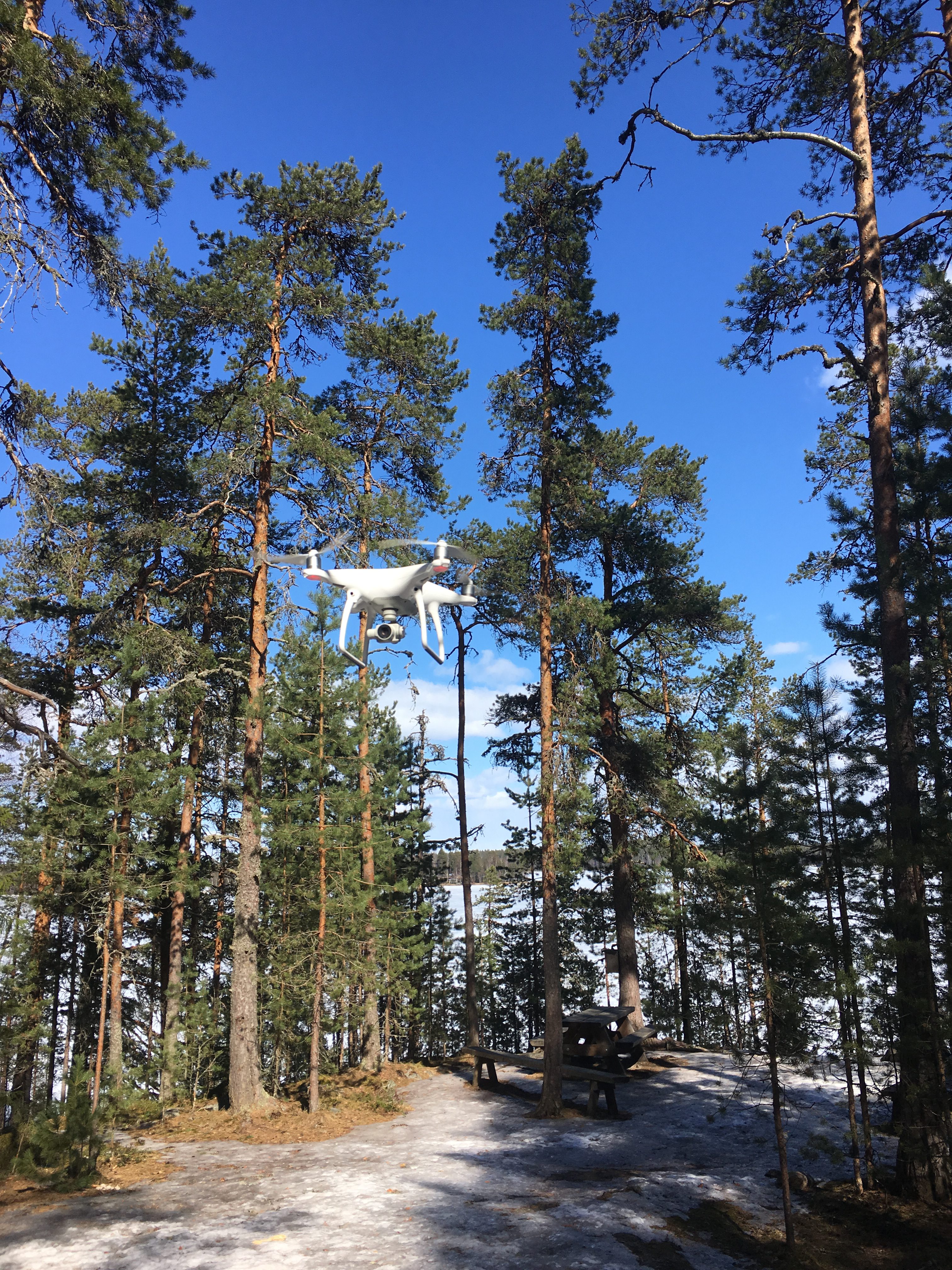After a week of being here in Joensuu, it was finally time to do what I have traveled 5,500 miles to do: see what life is like in a Finnish school. Koulu is the Finnish word for school, so you will see it in the names of schools around Finland.
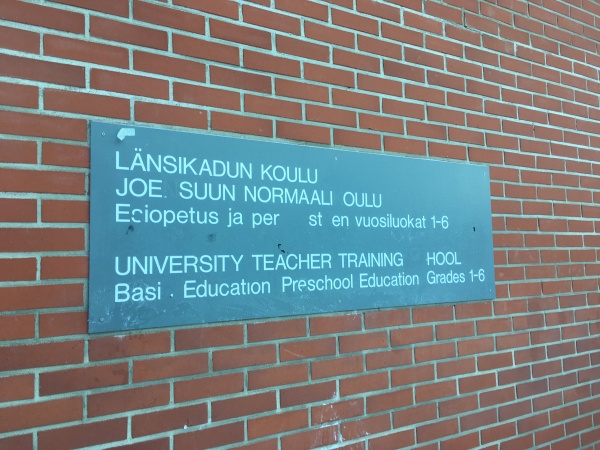
Kari and Sari, our advisors, took Sundra and I over to Normaalikoulu, the university’s teacher training school. This is where teachers go during various stages in their teacher training program to complete their practicums and student teaching. We are fortunate to have this school so close to the university, for it is full of educational expertise and resources for us.
Kari and Sari showed us around the school, introduced us to many of the staff members, told us we were welcome to visit any classroom we liked, and said their goodbyes. We were now on our own. A little unsure as to where we should go, Juha, a 5th grade teacher, invited us to join his class for religion lessons, and then lunch. While we didn’t understand much of what was being discussed during the lesson, Juha made an effort to explain what he was doing or saying when he could, and a couple of students even spoke in English with us (although most were quite shy). 2 boys asked me if I had any pets, to which I emphatically responded yes and proceeded showing them pictures of Wesson.
When we were invited to eat lunch with the class, my thoughts immediately went to what I might typically see for lunch at my school, which sounded less than appetizing. Juha assured us that the food was quite good, and most of the teachers ate the school lunch with the students every day.
- I love the open cafeterias
- Potato and fish casserole, bread and fresh salad
- Students can serve themselves
- Fresh salad, vegetable casserole, bread and milk
The lunchtime experience was one of the biggest differences I noticed at the school. The lunch schedule was staggered, so there were usually one or two classes in the lunchroom at a time. Students were free to walk down the stairs to lunch when they had their hands washed, and served themselves lunch. They were given real plates and silverware, and almost every student took salad, the main course, and a glass of milk. The only options for a drink were milk (whole and nonfat) and water. The salad always had fresh vegetables, and the main course gave students a vegetarian and meat option. I was thrilled about this! Students were able to choose their seats around the cafeteria, and the teachers sat and ate lunch with the students. It was never too noisy, and all students sat with their peers, conversing and eating their meals. When they finished, they took their trays, sorted their trash, and placed their silverware, dishes, and trays in the appropriate containers. This made the kitchen staffs’ job of washing everything quite easy. After eating, all students bundled up with their boots and coats, and went outside for recess.
After our initial visit on Tuesday, we went back to the school for the next few days observing different subjects in the 5th grade classrooms- math, writing, language, and of course, science.
Students were learning about human body and space in science. Writing was connected to their science lessons- they had to imagine their school took a field trip to Mars 30 years from now- what would their trip be like? It was fun to watch the students create mind maps and discuss their writing plans before sitting down to write their stories.
I really enjoyed looking around the classrooms and the school as a whole. The use of dots on the whiteboard turned a normal white space into a multifunctional board, giving students (and the teacher) the guidance to write straight, create gridlines, or ignore them completely for a drawing. Simple yet so helpful. The other ruler-type tool you see pictured was pretty cool, as it helped students visualize centimeters, and how much 10cm, 20cm, etc. would be. Finally, there are a couple pictures of the math workbook. The opening activity was fun- students had to use the picture to create math story problems for their multiplication and division unit.
The school itself had a very appealing, welcoming layout, much like walking in a home. There were a lot of areas for students to sit in small groups and work, and many collaborative learning areas. There were mini libraries in every corridor, and students were encouraged to find working spaces where they could complete their work. There was a lot of effort into making the school feel comfortable, relaxing, and much like home.
My musings:
- Students call their teachers by their first names. This goes at all levels of education, including the college.
- Students really do get breaks every hour! And have plenty of outdoor play time each day.
- The start and end times can be different every day, and it is up to the students (and parents for the younger students) to know what time to be at school each day.
- Teachers must know how to sing, play piano, and teach PE- they are typically required to teach these “special” subjects to their students.
- Cross country skiing and ice skating are part of the PE program 🙂
- There is a lot of trust afforded to students and teachers (more on this in my next post)
Did you know?
In math, the symbol “x” is not used for multiplication. The symbol used is merely the dot between two numbers, something our students in the US might not see until pre-algebra.
